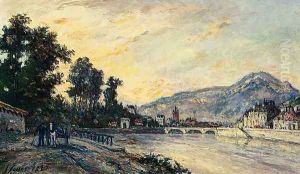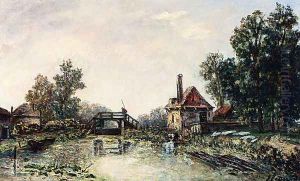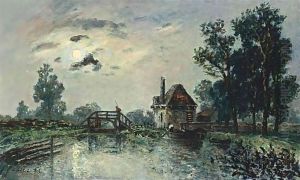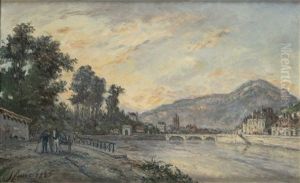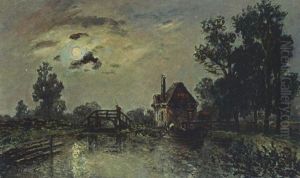Josephine Fesser Paintings
Josephine Fesser, born in 1819, was a 19th-century painter who, despite not being widely known in the grand narrative of art history, made contributions to the art scene during her lifetime. Her work and life are less documented compared to many of her contemporaries, which can be reflective of the challenges women artists faced in gaining recognition during that era. She was born in an epoch where the art world was dominated by men, and women often struggled to receive formal training or to have their work exhibited.
Fesser's life as an artist is intertwined with her relationship with Jean-François Millet, a notable French painter and one of the founders of the Barbizon school, renowned for his realistic and sympathetic depictions of peasant life. She was a student and close friend of Millet, who greatly influenced her artistic development. Fesser worked primarily as a genre painter, a style that depicts scenes of everyday life and is often imbued with a narrative element. Her association with Millet likely exposed her to the Barbizon school's focus on nature and rural scenes, which may have influenced her own artistic pursuits.
Despite the challenges of her time, Fesser demonstrated a commitment to her art, developing her skills and creating works that reflected her environment and experiences. Unfortunately, due to the limited recognition of many women artists historically, there is scant information regarding her exhibitions or the extent of her oeuvre. Josephine Fesser passed away in 1903, leaving behind a legacy that, like that of many women artists of the period, requires further research and appreciation to fully understand her impact and contributions to the art world.
